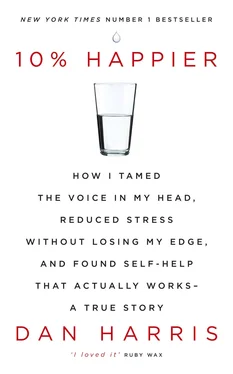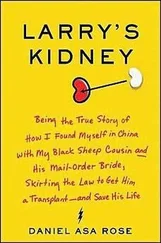That said, I continued with my plan for broadening our coverage beyond the hot buttons of the culture wars. I went to Salt Lake City to profile the Apostles of the Mormon Church; I interviewed the head of a Wiccan coven in Massachusetts; I even covered the annual American Atheists convention. On Wonbo’s urging, we launched a series called “Tests of Faith,” which included stories about a Unitarian congregation in California agonizing over whether to accept a registered sex offender, and also about an Episcopal priest who claimed that, after a profound conversion experience, she now believed in both Christianity and Islam.
I kept covering the born-again scene, of course. It was too juicy—and too newsy—to ignore. And with Ted Haggard, I now had a terrific inside source to make sure my coverage was more accurate and nuanced. He became my first stop when I was looking for candid answers about evangelicals. He was always willing to respond to questions off the record, returning emails instantaneously from his private AOL account.
When Pat Robertson publicly suggested that the United States send “covert agents” to assassinate Venezuelan dictator Hugo Chávez, Ted was the only major evangelical figure to go on the record about it, saying, “Pat was not speaking for Christianity.” I did the interview from an edit room at our offices in New York City, where I could see Ted on a monitor, beamed in via satellite from Colorado. When it was over, we exchanged a few pleasantries and Ted good-naturedly made fun of me for having worn an ugly green tie on television the night before.
Not long afterward, he and his top lieutenant, a crisp young guy named Rob, came to New York, and I took them out to a fancy restaurant for lunch. Ted seemed impressed by the whole Manhattan scene. Over the gentle clinking of silverware and with a view of Central Park, he continued to pull back the curtain on the inner workings of American Evangelicalism. He told me how he and Jim Dobson had clashed over Ted’s desire to focus evangelicals on issues like global warming. In Ted’s account, the behind-the-scenes maneuvering included behavior that was surprisingly ruthless.
It was fun to talk to Ted. You might think that the yawning cultural and philosophical gap between us—he was a guy who believed that he had a running dialogue with Jesus, after all—would make a genuine connection impossible, but that clearly wasn’t the case.
While I liked Ted, it was also pretty obvious that he had a dual agenda: to promote the faith—and to promote himself. I was by no means the only reporter Ted was working. In fact, he played the media like a fiddle, doing interviews with Tom Brokaw and Barbara Walters—and all that exposure worked. Since we’d met, Ted had been elected head of the National Association of Evangelicals, which had twenty-seven million members at forty-three thousand churches. Every Monday, he joined a conference call with the White House and other high-ranking Christians. Time put him on their list of the 25 Most Influential Evangelicals.
Sometimes he pushed his shtick a little too far. He made a memorably creepy cameo in an HBO documentary about the American faith scene, in which he said, seemingly off-the-cuff, “You know, all the surveys say that evangelicals have the best sex life of any other group.” In one interview with me, after I’d just asked him a series of questions about hot-button social issues, he stopped short in the middle of an answer. Then, while the cameras rolled, he said, “I hope I’m not coming across here as too harsh. Am I coming across as too harsh? I’m just going to focus on how cute Dan is, and then I won’t seem so harsh.” I had no idea how to deal with this comment other than to laugh and shift uncomfortably in my chair.
Notwithstanding Ted’s foibles, he’d helped me become utterly at ease around people who said “God bless you” when I hadn’t sneezed. Increasingly, I even now found myself in the position of defending evangelicals to my friends and family. Once, when I made a passing reference to “evangelical intellectuals,” a relative quipped, “Isn’t that a contradiction in terms?” Another stereotype I spent a lot of time batting down: that Christians were all spittle-spewing hatemongers. I met a few of those in my travels, of course, but they struck me as a distinct minority. Wonbo and I—two nonreligious New Yorkers, one of them gay, the other gay-friendly—were never treated with anything short of respect. Often, in fact, what we found was kindness, hospitality, and curiosity. Yes, people would always ask whether we were believers, but when we said no, there were never gasps or glares. They may have thought we were going to hell, but they were perfectly nice about it.
Then early one November morning in 2006, I was groggily rooting around the Internet, looking for stories. I started each day with an email to the senior producers of World News , pitching pieces I could do for that night’s show. And there it was on Drudge: an article saying that Ted Haggard had been accused by a male escort of paying for sex as well as for crystal meth. I immediately assumed it must be a mistake, or a smear. I was so convinced it couldn’t be true that I didn’t even include it in my pitch email. A short while later, when one of the senior producers from Good Morning America called to ask me about it, I confidently assured her it must be false.
But then the story took on real legs. The male escort, a beefy, incongruously soft-voiced man named Mike Jones, seemed pretty credible. He said he’d had repeated encounters with a man who called himself “Art.” In an interview with our ABC affiliate in Denver, Jones said, “It was not an emotional relationship. It was strictly for sex.” He explained that this had gone on for years, but that when he saw Ted/Art on television backing a ballot initiative that would ban gay marriage, he decided he had to come forward. “He is in the position of influence of millions of followers and he’s preaching against gay marriage,” he said, “but behind everyone’s back doing what he’s preached against.” Making matters worse for Ted, Jones had voice mails, on which he claimed Ted could be heard arranging assignations and drug deals. On one of them, a male voice said, “Hi, Mike, this is Art, just calling to see if we can get any more supply.” It was unmistakably Ted.
I was thunderstruck. No one I knew had ever taken me by surprise quite like this. The clean-cut, Indiana-raised, God-fearing Ted Haggard—a father of five and the spiritual shepherd to thousands—had been leading a double life. I had been in contact with the guy for years and had never had even the slightest inkling. In hindsight, there might have been a few signs: that all of his lieutenants were young and male; that time he called me “cute.” But really, none of that would have foretold the panoramic collapse that was now playing out.
The unmasking of Ted Haggard became a massive national story. There are few things the media loves more than a self-appointed paragon of virtue falling from grace. Local reporters captured Haggard leaving his house in an SUV, with his wife by his side and several of his children in the car. To me, he looked like a child caught dead to rights but still hoping against hope that he could talk his way out of it. He leaned over the wheel and told the assembled reporters, “I’ve never had a gay relationship with anybody, and I’m steady with my wife.”
“So you don’t know Mike Jones?” one reporter asked.
“No, I don’t know Mike Jones,” he said.
Moments later, in a flagrant bit of bad acting, Ted asked, “What did you say his name was?”
Days later, the charade crumbled. He stepped down from his positions at the National Association of Evangelicals and at New Life Church. In a statement read aloud to his followers, he said, “There is a part of my life that is so repulsive and dark that I’ve been warring against it all of my adult life.”
Читать дальше












